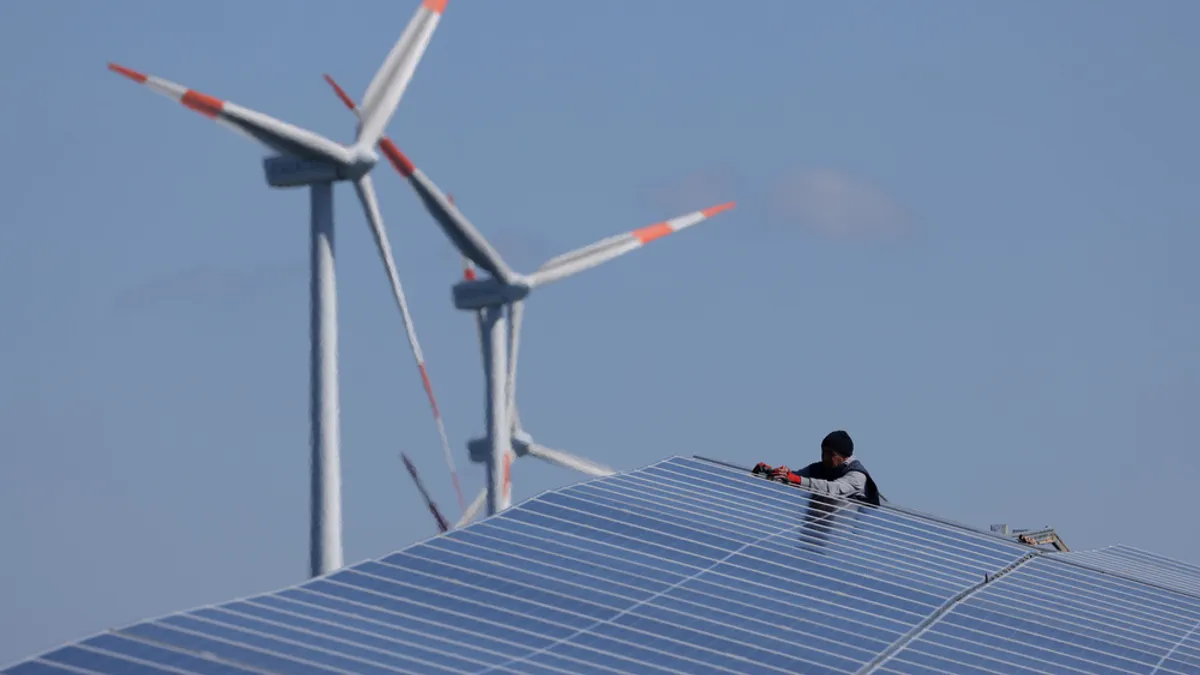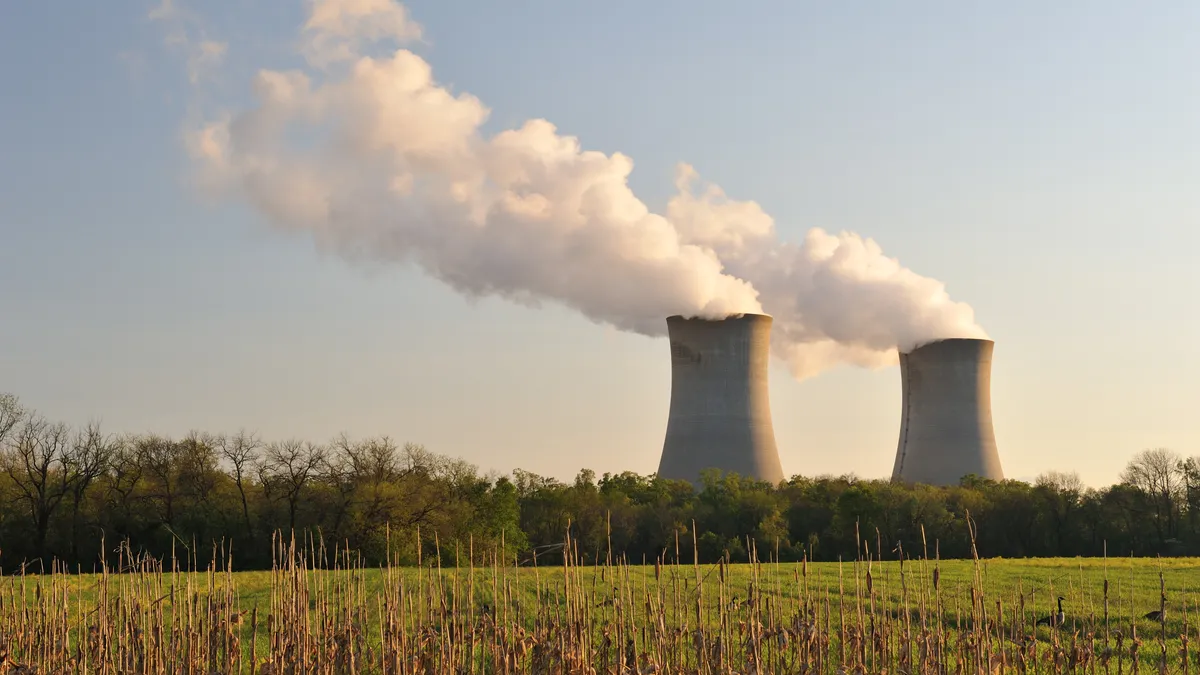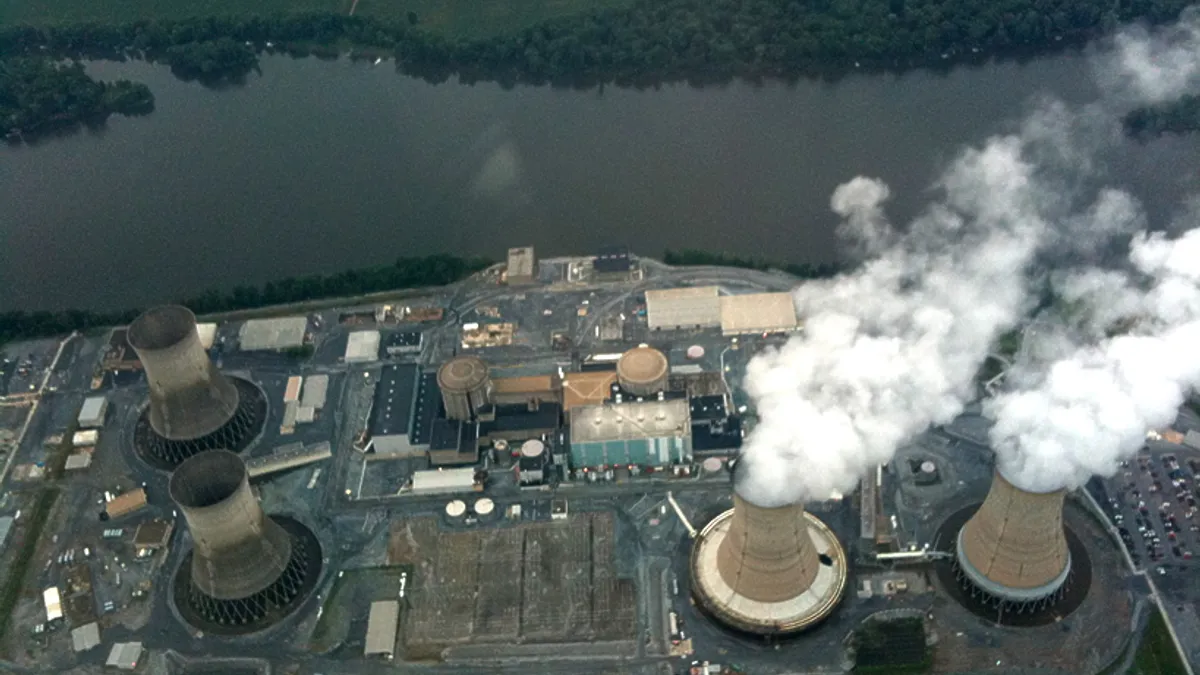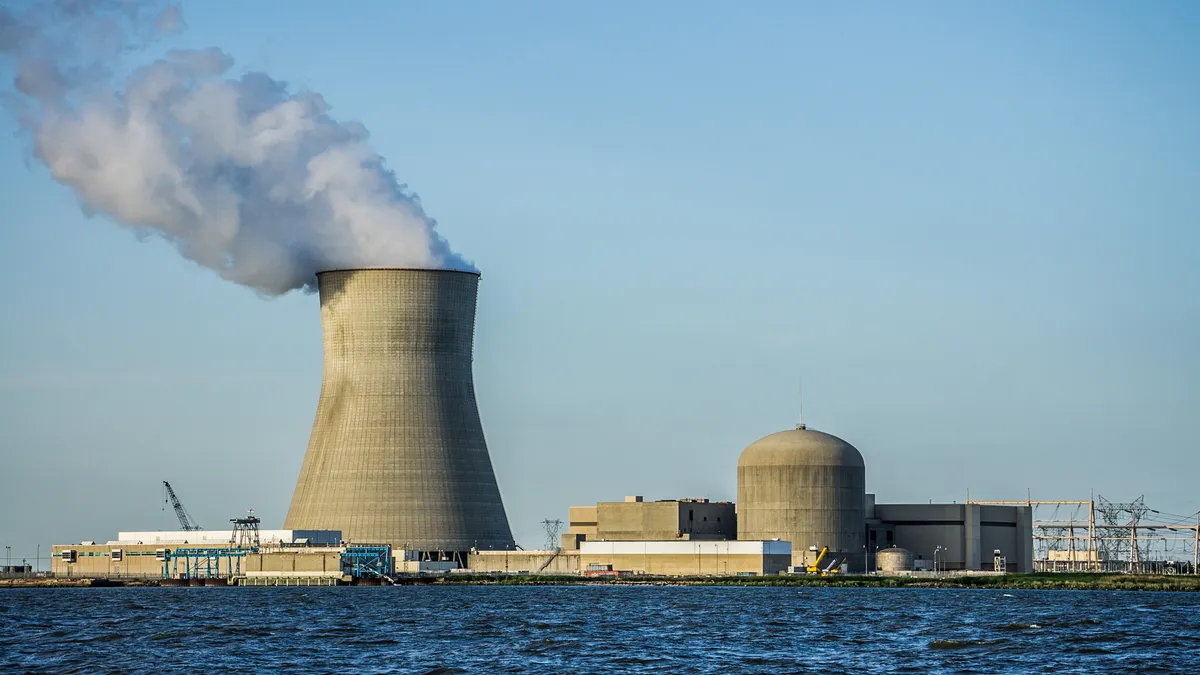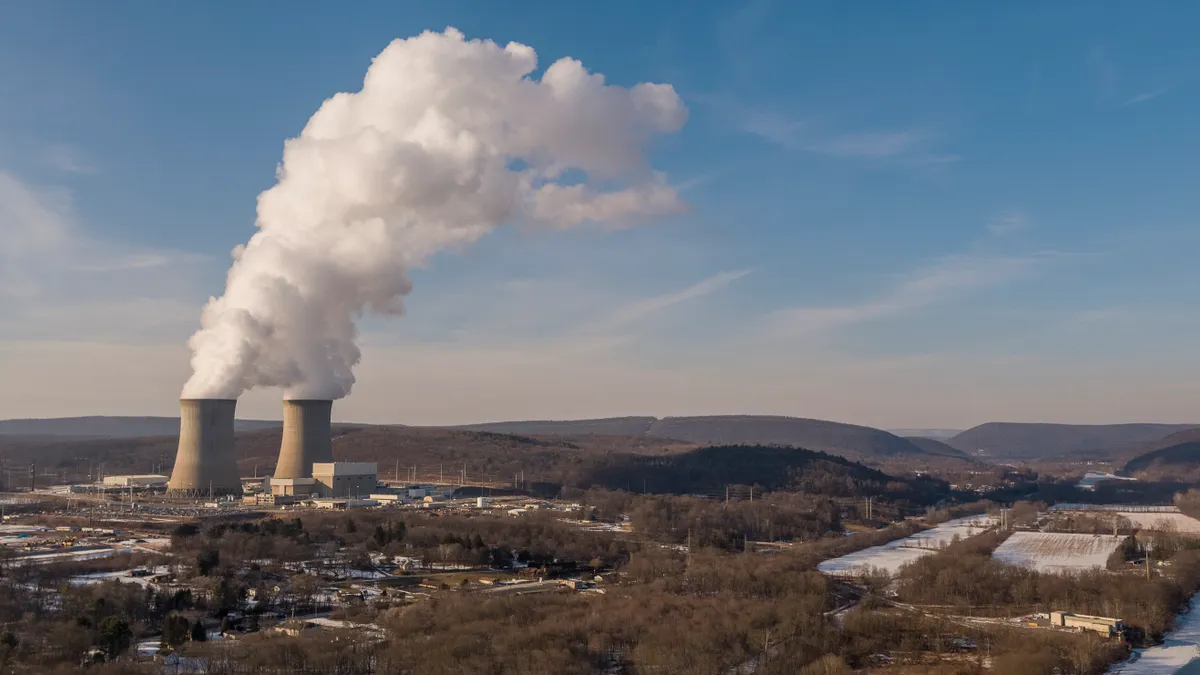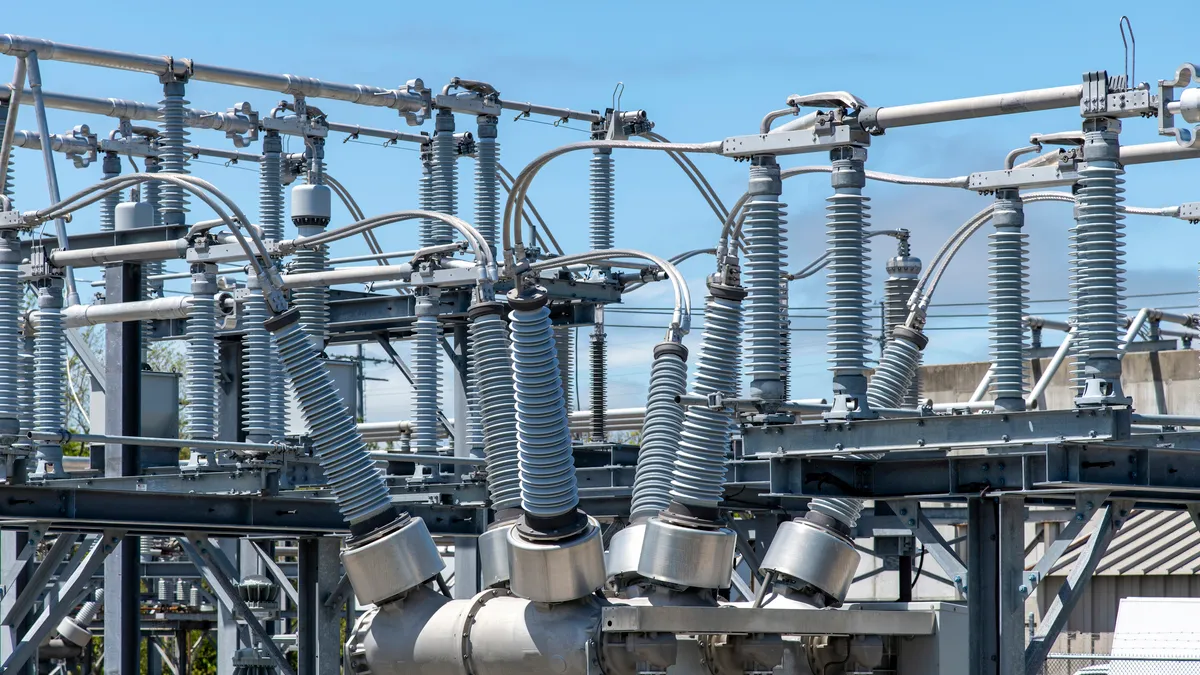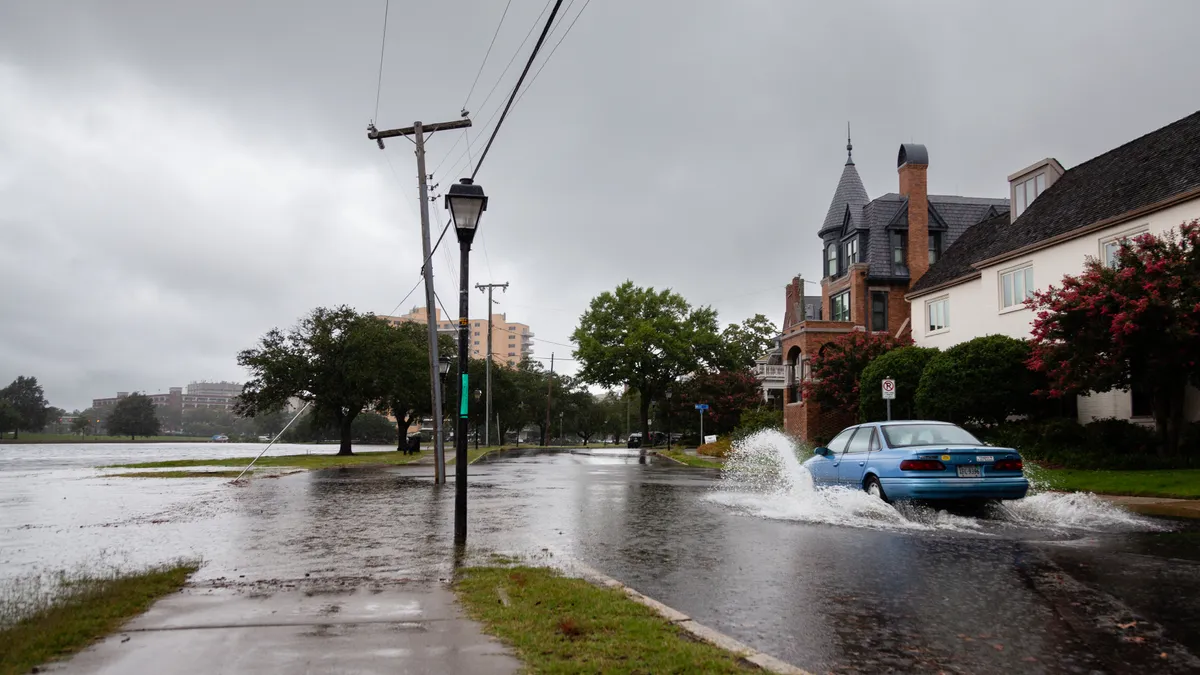When a Hawaiian judge struck down President Donald Trump's travel ban for a second time last month, along with the decision was a simple acknowledgement: Everyone had been listening to the president's campaign rhetoric.
“The Court will not crawl into a corner, pull the shutters closed, and pretend it has not seen what it has,” wrote Judge Derrick K. Watson of the United States District Court for the District of Hawaii.
While that travel order left out earlier language specifically barring Muslims from entering the United States, Watson wasn't buying it, repeatedly referencing Trump's campaign speeches in his decision as evidence that the motivation for the order was to restrict immigration on the basis of religion.
A similar logic is now playing out in the energy realm with the Department of Energy's new 60-day review of baseload power generation, which aims to ascertain how utility sector policies are contributing to the "erosion" of coal and nuclear capacity that can operate around the clock.
Trump spent months on the campaign trail praising coal and natural gas while criticizing renewable energy, and any results of the review will naturally be viewed in the context of those statements. Already, they've raised doubts among a number of power sector observers that any review of generation resources from one of Trump's cabinet agencies can be impartial.
"There are very serious questions that do need to be addressed here," said energy analyst Alex Gilbert, co-founder of Spark Library. But, he added, "the administration has a huge credibility problem. ... this is a very clear example of how the toxic nature of environmental policy and electricity regulation is potentially harming other efforts to design a better system."
In the last two decades, utilities have announced more than 100 GW of coal generation retirements, and they now make up the bulk of plants being pulled offline. In 2015, coal accounted for 80% of the nearly 14 GW taken offline, but nuclear plants and even some gas generators have felt the pressure.
Cheap natural gas, tighter environmental controls and the rise of renewable energy have all played a role. But, at least so far, the transitioning fuel mix has not caused major reliability problems, thanks to an influx of flexible gas generation and better grid operations to integrate renewable energy.
Even so, the Trump administration appears concerned, ordering a review last week to evaluate whether certain power sector subsidies, regualtions and tax policies are hastening generation retirements and threatening power reliability.
Though solar and wind energy are not mentioned in the letter by name, the review appears to single them out for scrutiny, praising baseload generation while raising concerns about subsidies for other unnamed resources.
"Subsidies create acute and chronic problems for maintaining adequate baseload generation and have impacted reliable generators of all types," Perry wrote in the memo. He also tasked his chief of staff, former EEI policy head Brian McCormack, to ascertain whether wholesale power markets adequately value the reliability attributes of baseload coal and nuclear plants, including on-site fuel supply.
Those directives have many power sector observers reading between the lines, concerned that a DOE review will become subservient to the pro-fossil fuel stance of the White House.
"The President said he wanted to try and save coal," said Jim Lazar, a senior advisor at the Regulatory Assistance Project. "If I thought it was an objective review I would certainly welcome it. An objective review, in my opinion, would show that nuclear plants are a whole lot like wind and solar: They produce about half of their power when it's very valuable, and about half of their value when it's not valuable at all."
"There's a wide belief among baseload generation owners that their resources have a different set of vales than other resources that compete in the market," said Lazar.
Jesse Jenkins, an MIT PhD candidate and research associate at the Utility of the Future Project, put it this way: "There's a risk this becomes politically motivated—efforts to undermine renewable energy support policies, which could be counterproductive. There are a host of issues in electricity markets that can be improved, and there are a number of technical efforts underway."
The Federal Energy Regulatory Commission will hold a technical conference on state power supports at the beginning of next month. New York, Ohio and Illinois have all proposed subsidies to keep nuclear and coal plants online, and all have been challenged. And last year, in Hughes v. Talen Energy Marketing, the U.S. Supreme Court struck down a Maryland program the justices said infringed on the federal government's sole authority over interstate power markets.
All that means there's plenty for the DOE to discuss in its report. But as for a review of reliability impacts, Jenkins said, "I don't think that is consistent with how the energy markets work."
What the study will examine
Perry's memo looks to address three broad topics, and has significant overlap with the topics of FERC's technical conference. The memo calls for a 60-day review to include:
- How wholesale electricity markets have evolved and whether federal policy interventions are challenging the "original policy assumptions that shaped the creation of those markets."
- Whether wholesale energy and capacity markets are adequately compensating attributes such as on-site fuel supply and "other factors that strengthen grid resilience and, if not, the extent to which this could affect grid reliability and resilience in the future."
- The review will also question "the extent to which" regulation, mandates and tax and subsidy policies, "are responsible for forcing the premature retirement of baseload power plants."
George Harvey at CleanTechnica parses out the entire memo for those who think it all looks pretty innocuous. But the third point for review indicates Perry believes these things are occurring, at least to some extent.
All of that comes together in a package that looks somewhat like the issues FERC is preparing to tackle. But Jenkins said "there is also a broader overtone in that letter that says we need baseload power plants and anything that leads to the retirement of baseload power plants undermines the reliability of the power system."
"And that," he said, "just is not the case."
The bigger issue, according to Jenkins, is "about having an orderly transition to a different type of energy mix. Markets don't accurately capture a range if public objectives and externalities that aren't placed into those markets."
And the most obvious of those is carbon emissions — the rationale behind a host of Obama-era environmental policies the Trump administration is now working to roll back. While the U.S. Environmental Protection Agency has a duty to regulate greenhouses gases, the electric utility sector believes emissions can continue to decline even without eliminating fossil fuels.
According to the Edison Electric Institute, which represents investor-owned utilities, the industry’s carbon dioxide emissions were almost 25% below 2005 levels at the end of last year, without any major reliability problems.
"Regardless of what major policy initiatives are put in place going forward, our emissions likely will continue to decline due to historically low prices and a stable supply for natural gas, decreasing costs for renewables, and increasing efficiencies," EEI President Tom Kuhn said in a recent statement.
Are renewable resources a grid threat?
There is no doubt that renewable resources aren't making life easier for coal. Some particular power plants have been forced offline because they can't compete with cleaner energy, and the longer-term outlook is toward the addition of more wind and solar.
But in general, it's been natural gas that has been pressuring coal the most. Prices for the fuel have been historically low and the result has been low wholesale energy prices.
"The decline in the cost of natural gas has led to historically low wholesale energy prices," said Jenkins. "Renewables are sort of a secondary factor, and may impact the longer-term outlook for plant owners trying to decide if they can weather this downturn and expect prices to go up in the future."
But as to reliability, are plant retirements an issue?
"Our market prices are basically telling us it's not a problem," said Jenkins. "Capacity prices are still clearing very low which means we have an ample supply of capacity to meet projected peak demand. If we had a reliability risk we would see capacity prices climb … our markets are well-designed to send that signal when needed, and I don't see an impending reliability threat."
And several major markets are integrating high levels of renewable energy right now. The Southwest Power Pool set a new record this year for wind penetration, serving 52.1% of its load with the renewable generation at one point. And the grid operator's 2016 Wind Integration Study concluded it could reliably manage wind penetration levels of up to 60% with the addition of necessary transmission and system tools.
PJM Interconnection released a study last month that found its system would remain stable if more natural gas and intermittent renewables were added.
"This analysis underscores our responsibility to continue to operate the system reliably, and explore the role of resilience, the ability to tolerate unforeseen shocks and continue to deliver electricity," PJM CEO Andy Ott said in a statement. "Different resources provide different reliability attributes, though new technology or regulations have the ability to improve those capabilities."
The study reached a couple of important conclusions: A more diverse fuel portfolio isn't necessarily more reliable, but a sufficient level of diversity can help avoid risks.
Paying for baseload
“The next big set of questions is, what's the right way to pay for baseload,” said Lazar. “Baseload plants do provide a different character of capacity than wind and solar.”
One issue is the size of baseloand plants, which tend to be very large. When they are out of service, due either to refueling or an event, it takes a lot of power off the grid. A nuclear plant could trip offline and take 1,200 MW of capacity off the system. In order to ensure reliability, a grid needs to have replacement power for its largest source.
“We pay a very high price to have a lot of spinning reserves on the system,” said Lazar. “It's not a trivial cost. If we had a system made up of a large number of small power plants instead of a small number of large plants, we'd need lower reserves. You always have to have the ability to carry the load with the largest single unit tripping offline."
A capacity market with all-dispatchable power is a relatively simple idea, said Spark Library's Gilbert. But renewables have made things much more complicated. Intermittent resources that come online during the day are driving down wholesale power prices and impacting revenues. In turn, capacity revenues are not enough to keep power plants online.
"But then you also need to develop new mechanisms to value reliability," said Gilbert. "A straight capacity market just doesn't work anymore when you have large amounts of non-dispatchable capacity. And that's because a lot of that capacity, even though it's not dispatchable, has some capacity value."
Wind has a very low capacity value, while solar is better. "But it becomes a much more complex and complicated than the previous systems," said Gilbert.
FERC's technical conference at the beginning of next month will bring together stakeholders from each organized market to ascertain the effects of renewables and low natural gas prices on wholesale power markets. Already, some innovative solutions have been floated, such as a two-part capacity auction — one for unsubsidized resources and another for ones with subsidies.
The FERC conference, conducted by acting Chairman Cheryl LaFleur, an Obama appointee, is widely expected to be evidence-based and non-partisan, addressing issues held by both generators and clean energy advocates. But coming to a solution is expected to take longer than 60 days, and in the meantime analysts remain skeptical of the accompanying review at DOE.
“I wont predict how it will come out, because I think there are some important questions," Lazar said. "But for an administration that said it wants to save coal, the objectivity of the analysis is questionable. They can certainly hire a consultant to produce whatever result they want.”





